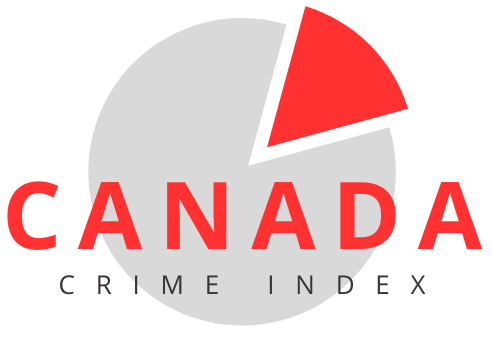Ontario’s minimum wage went under changes in 2024 and will in 2025, affecting workers and businesses across the province.
As the cost of living continues to rise, particularly in urban centers, and economic disparities become more pronounced, the Ontario government has taken steps to address these challenges.
The ripple effects of these wage changes will likely be felt across various industries, from retail and hospitality to manufacturing and services, making it essential for business owners and managers to stay informed and prepared.
So, “What is minimum wage in Ontario?”
Let us talk about it.
Table of Contents
Toggle1. What is Minimum Wage in Ontario?
Starting October 1, 2024, the minimum wage Ontario will increase from $16.55 to $17.20 per hour.
It represents a 3.9% increase, reflecting the province’s commitment to ensuring that the minimum wage keeps up with inflation and the rising cost of living.
Over the years, Ontario has seen a steady increase in minimum wage rates, aiming to support the livelihood of low-income workers while balancing the interests of businesses.
- 2020 – $14.25
- 2021 – $14.35
- 2022 – $15.00
- 2023 – $16.55
According to Vancouver School of Economics, an increase is significant as it directly affects a broad segment of the workforce, including:
- Part-time workers
- Entry-level employees
- Low-wage industries workers
The wage hike is designed to help workers better meet their basic needs, such as:
- Housing
- Food
- Transportation
It also places new financial demands on businesses, especially small and medium-sized enterprises that may need to adjust their budgets and pricing strategies to accommodate the higher wages.
As you can see, the answer to the question “What is minimum wage in Ontario?” is not easy since it encompasses numerous details that require your attention.
Interesting Fact: While the Toronto minimum wage is equal to the provincial level, the living costs are $25.05 per hour.
2. Specialized Minimum Wage Rates
Now that we answered the question “What is minimum wage in Ontario?” let us go into details.
Ontario minimum wage structure includes specialized rates for specific groups of workers. Students under 18 who work 28 hours per week or less will see their wage increase to $16.20 per hour. Student wage Ontario gov set is an important indication for the care for young workforce.
The University of Toronto outlined all the main factors in a report.
The rate is slightly lower than the general minimum wage but is intended to support young workers who are balancing employment with their education.
Homeworkers, who often engage in tasks such as sewing, telemarketing, or other home-based work, will have their minimum wage set at $18.90 per hour.
A higher rate reflects the nature of homework and the need to ensure fair compensation for workers who often do not benefit from the same protections and resources as those in traditional workplaces.
For hunting, fishing, and wilderness guides, the wage structure is based on the length of their shifts.
| Minimum wage rate | Rates from October 1, 2024 to September 30, 2025 | Rates from October 1, 2023 to September 30, 2024 | Rates from October 1, 2022 to September 30, 2023 | Rates from January 1, 2022 to September 30, 2022 | Rates from October 1, 2021 to December 31, 2021 |
|---|---|---|---|---|---|
| Hunting, fishing and wilderness guides minimum wage (less than five consecutive hours) | $86.00 | $82.85 | $77.60 | $75.00 | $71.75 |
| Hunting, fishing and wilderness guides minimum wage (five or more consecutive hours) | $172.05 | $165.75 | $155.25 | $150.05 | $143.55 |
These rates recognize the specialized skills required for these jobs and the often challenging working conditions, ensuring that workers are fairly compensated for their expertise and time.
3. Impact on Small Businesses
The increase in Ontario minimum wage to $17.20 per hour presents both challenges and opportunities for small businesses.
- Increased employee satisfaction and retention
- Reducing turnover costs
- Potentially improving productivity
The immediate impact on payroll expenses can be significant, particularly for small businesses with tight margins.
To manage the financial impact, small businesses should start by conducting a thorough audit of their expenses. Identifying areas where costs can be reduced or operations can be streamlined will be essential.
For instance, businesses might consider investing in automation or other efficiency-enhancing technologies to reduce labor costs in the long term. Canada is an interesting example. With its unemployment rate being just at 5%, it still faces labor shortage. That is why many companies are considering automation for many of their work procedures.
Adjusting pricing is another strategy businesses can employ. While raising prices can be risky, especially in competitive markets, it may be necessary to cover the increased labor costs. Communication with customers about the reasons for any price increases can help maintain trust and loyalty.
Small businesses should explore opportunities for government grants or subsidies that may be available to support the transition to higher wages.
Interesting Fact: A McKinsey report from 2017 predicted that almost half of all the work will be automated by 2055.
4. Comparison with Other Provinces
Ontario’s new minimum wage rate of $19.00 per hour positions it as the third-highest in Canada, following closely behind Nunavut and British Columbia.
Nunavut’s minimum wage is slightly higher, reflecting the province’s high cost of living.
The comparison highlights Ontario’s effort to remain competitive and ensure that its workforce is compensated in line with the economic realities of the region.
Here are the minimum wage rates in all Canadian provinces:
| Province/Territory | Minimum Wage |
|---|---|
| Alberta | $15.00 |
| British Columbia | $17.40 |
| Manitoba | $15.30 |
| New Brunswick | $15.30 |
| Newfoundland & Labrador | $15.60 |
| Northwest Territories | $16.05 |
| Nova Scotia | $15.20 |
| Nunavut | $19.00 |
| Prince Edward Island | $15.00, increasing to $16.00 |
| Quebec | $15.75 |
| Saskatchewan | $14.00, increasing to $15.00 |
| Yukon | $17.59 |
On the federal level, the minimum wage in Canada is set at $17.30 per hour for employees working in federally regulated industries, such as:
- Banks
- Telecommunications
- Interprovincial transportation
However, this federal rate has limited application, as most workers in Ontario are covered by the provincial minimum wage laws.
The decision to set theOntario minimum wage above the federal rate underscores the province’s commitment to addressing local economic conditions and ensuring that workers receive fair compensation.
Regional variation in minimum wage rates across Canada reflects the economic conditions and living costs in different provinces.
It also underscores the importance of provincial governments in tailoring wage policies to the specific needs of their populations.
5. Annual Adjustments
Ontario’s minimum wage is adjusted annually on October 1, based on changes in the Ontario Consumer Price Index (CPI).
The mechanism ensures that the minimum wage Ontario gov decided keeps pace with inflation and the rising cost of living.
The CPI measures the average change over time in the prices paid by consumers for a basket of goods and services, making it a reliable indicator of economic conditions.
By tying the minimum wage Ontario set up to the CPI, the local government wants to set a predictable and transparent process for wage adjustments.
For employers, the annual adjustment process provides a level of predictability, allowing them to plan for wage increases in their financial forecasting.
The annual adjustment also reflects the province’s broader economic strategy to balance the needs of workers and businesses.
While it ensures that workers receive fair compensation, it also takes into account the economic conditions that affect businesses, particularly small enterprises.
6. Employer Obligations
With the increase in Ontario’s minimum wage, employers must ensure compliance with the new rates and understand their legal obligations.
- Employers will be required to include expected compensation or compensation ranges in job postings.
- Employers will be prohibited from requiring Canadian experience in job postings.
- Employers must disclose if AI is used in the hiring process in job postings.
- Employers must retain copies of job postings and associated forms for three years after they are taken down.
One of the key requirements is the “three-hour rule,” which mandates that if an employee is scheduled to work for three or more hours but works less than three hours, they must be paid for a minimum of three hours at their regular wage rate.
Employers are also required to keep accurate records of hours worked and wages paid.
Failure to comply with these requirements can result in fines and legal penalties. Employers must ensure that all employees, including those earning commissions or piece rates, receive at least the Ontario minimum wage for the hours they work.
To ensure compliance, employers should review their payroll systems and employee contracts to ensure they align with the new minimum wage Ontario rates. Employers should also provide training to managers and HR staff to ensure they understand the legal requirements and can implement them correctly.
Regular audits of payroll practices can help identify any discrepancies and ensure that all employees are paid correctly.
7. Minimum Wage for Commission-Based Employees
Commission-based employees are subject to the minimum wage laws in Ontario, which means that employers must ensure these employees earn at least $17.20 per hour, effective October 1, 2024.
The requirement can be challenging for businesses, especially in industries where earnings are heavily commission-based, such as sales.
For example, if a salesperson works 40 hours per week and earns $500 in commissions, their hourly rate would be $12.50. Since this is below the minimum wage, the employer must make up the difference, ensuring that the employee’s total earnings for the week equal at least $688 (40 hours x $17.20 per hour).
Employers need to carefully track the hours worked by commission-based employees to ensure compliance with minimum wage laws. It may require adjustments to commission structures or providing additional compensation to meet the minimum wage threshold.
Failure to comply with these requirements can result in legal penalties and damage to the employer’s reputation.
Interesting Fact: Proposed $20 per hour minimum wage in Canada could lead half a million businesses near bankrupcy.
8. Room and Board Deductions
Employers in Ontario are permitted to deduct room and board from an employee’s wages, but they must adhere to specific guidelines to ensure compliance with minimum wage laws. These are defined in detail in Your Guide to the Employment Standards Act, from 2000.
These deductions must be reasonable and cannot reduce the employee’s earnings below the minimum wage.
The maximum amount that can be deducted for a private room is $31.70 per week, and for meals, $2.55 per meal, according to a report by Alliance for Change. To calculate the impact of room and board deductions on minimum wage compliance, employers must first determine the employee’s gross earnings and then subtract the allowable deductions.
For example, if an employee works 40 hours per week at the new minimum wage rate of $17.20 per hour, their gross earnings would be $688.
After deducting $31.70 for room and $76.50 for 30 meals, the employee’s net earnings would be $579.80.
The net amount must still meet the minimum wage requirements. Employers must also provide clear and transparent documentation to employees regarding room and board deductions.
Employees should be fully informed about the deductions, and these amounts should be clearly itemized on their pay stubs.
9. Impact on Workers

The increase in Ontario’s minimum wage to $17.20 per hour is expected to benefit many workers by providing them with higher incomes, which can help them better manage the rising costs of living. The additional income can provide greater financial security and improve overall quality of life.
However, the wage increase may also present challenges for some workers. As businesses adjust to the higher labor costs, there may be a reduction in hours or a slowdown in hiring, particularly in industries with slim profit margins.
While the wage increase helps offset inflation, it may not fully compensate for the rapid rise in living expenses in certain areas, such as housing and childcare. As a result, some workers may still face financial difficulties despite the higher wages.
Another potential challenge is the increased competition in the job market. As wages rise, more individuals may be attracted to the job market, leading to greater competition for available positions.
On the positive side, the wage increase could lead to greater job satisfaction and employee retention, as workers feel more valued and fairly compensated.
The increased purchasing power of workers can stimulate the local economy, as more income is spent on goods and services, potentially leading to increased demand and job creation in other sectors.
10. Exemptions and Special Rules
Ontario’s minimum wage laws include exemptions and special rules for certain types of employment and industries. These exemptions are designed to accommodate the nature of specific jobs, while still ensuring that workers are treated fairly.
It’s important for both employers and employees to understand these rules to ensure compliance and avoid any legal issues. Certain jobs, such as those involving commission-based sales or piecework, have special rules regarding minimum wage.
Employers must carefully review the specific conditions that apply to these roles to determine if an exemption is applicable. There are exemptions for students in co-op programs, apprentices, and other categories of workers who may have different wage structures.
One of the most important exemptions is the student wage Ontario has decided upon.
For instance, students who are part of recognized work-study programs may be paid differently than those in regular employment.
Other special rules apply to certain categories of employees, such as servers who receive tips. While tips can contribute significantly to a server’s income, employers must ensure that the base wage, excluding tips, meets or exceeds the minimum wage.
Consulting with legal or HR professionals is advisable for businesses that employ workers under these special conditions.
The Bottom Line
The 2025 minimum wage changes in Ontario, with the increase to $17.20 per hour, bring significant implications for both workers and employers.
Understanding these changes, along with the various specialized rates, employer obligations, and exemptions, is essential for navigating the evolving labor landscape.
Businesses and employees alike should seek tailored advice to ensure compliance and maximize the benefits of these wage adjustments.


















